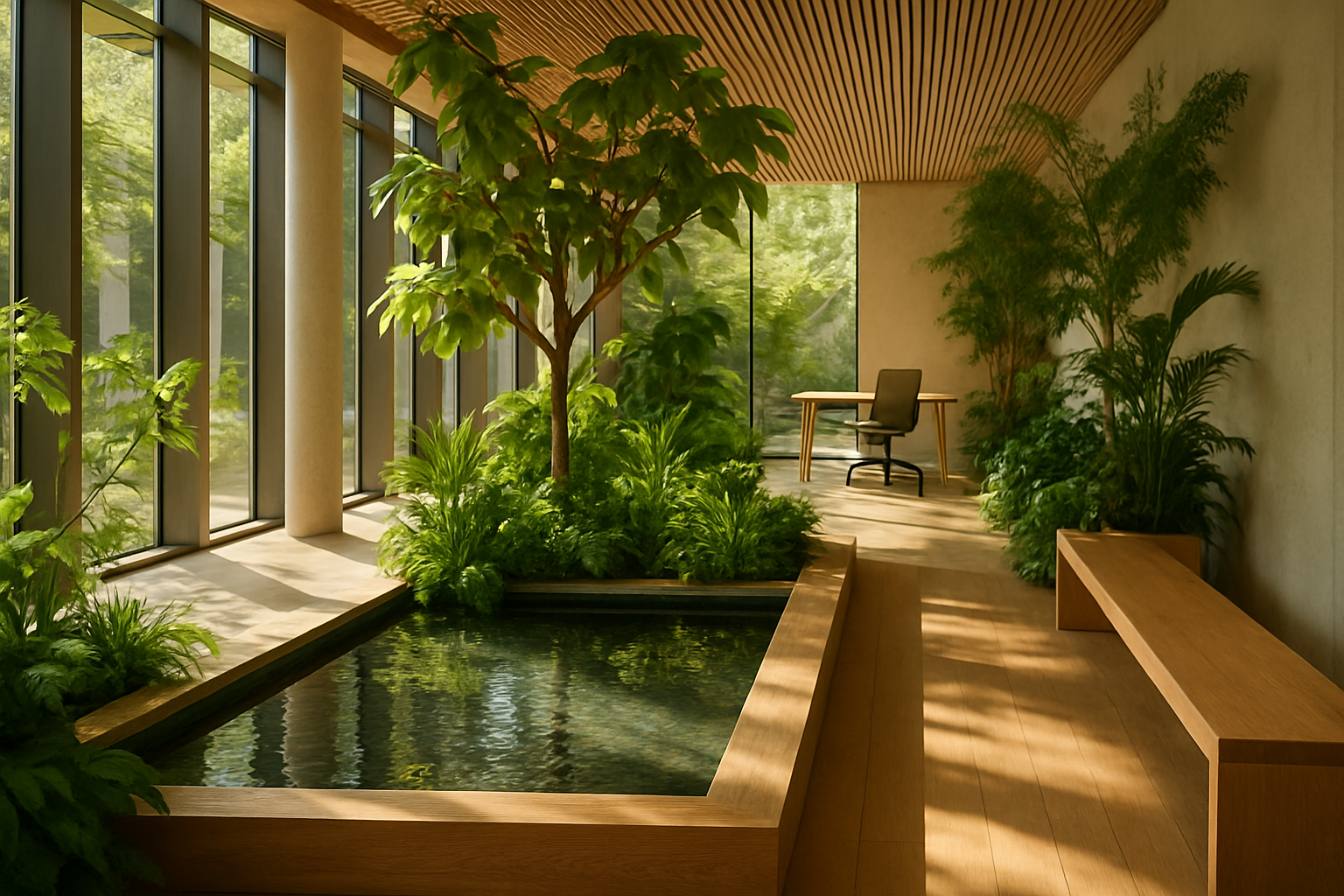Redefining Productivity: The Biophilic Office Revolution
The intersection of nature and workplace design is reshaping modern business environments. As companies seek innovative ways to boost employee well-being and productivity, biophilic office design has emerged as a groundbreaking solution. This approach integrates natural elements into the built environment, creating spaces that foster creativity, reduce stress, and enhance overall performance.

The Science Behind Biophilic Design
Biophilic design is rooted in the concept of biophilia, a term coined by psychologist Erich Fromm and later popularized by biologist Edward O. Wilson. It refers to humans’ inherent affinity for nature and living systems. In the context of office design, biophilic principles aim to satisfy this innate need by bringing elements of the natural world into the workplace.
Research has shown that exposure to nature and natural elements can have significant positive effects on human health and well-being. Studies have demonstrated reduced stress levels, improved cognitive function, and increased productivity among employees working in biophilic environments. These findings have spurred a growing interest in incorporating biophilic design principles into office spaces across various industries.
Key Elements of Biophilic Office Design
Biophilic office design encompasses a wide range of elements and strategies, all aimed at creating a more natural and harmonious work environment. Some key components include:
-
Natural light: Maximizing exposure to daylight through large windows, skylights, and strategic placement of workstations.
-
Indoor plants: Incorporating living plants and green walls to improve air quality and create a more vibrant atmosphere.
-
Natural materials: Using wood, stone, and other organic materials in furniture and finishes.
-
Water features: Introducing fountains or water walls to create a calming ambiance and improve acoustics.
-
Biomorphic forms: Integrating patterns and shapes inspired by nature into architectural elements and decor.
-
Views of nature: Positioning workspaces to provide views of outdoor green spaces or incorporating nature-inspired artwork.
The Impact on Business Performance
The implementation of biophilic design principles in office spaces has been shown to have a significant positive impact on various aspects of business performance:
-
Increased productivity: Employees in biophilic offices report higher levels of focus and concentration, leading to improved task performance and overall productivity.
-
Enhanced creativity: Exposure to natural elements has been linked to increased creative thinking and problem-solving abilities.
-
Reduced absenteeism: Biophilic environments contribute to improved physical and mental health, resulting in fewer sick days and reduced absenteeism.
-
Improved employee retention: Companies that invest in biophilic office design often experience higher levels of job satisfaction and employee loyalty.
-
Positive brand image: Biophilic offices demonstrate a commitment to employee well-being and environmental sustainability, enhancing the company’s reputation.
Implementing Biophilic Design: Strategies for Success
While the benefits of biophilic office design are clear, implementing these principles effectively requires careful planning and consideration. Here are some strategies for successful implementation:
-
Conduct a thorough assessment: Evaluate the current office space and identify opportunities for incorporating biophilic elements.
-
Set clear objectives: Define specific goals for the biophilic design implementation, such as improving air quality or reducing stress levels.
-
Collaborate with experts: Work with architects, interior designers, and biophilic design specialists to create a comprehensive plan.
-
Prioritize employee input: Involve employees in the design process to ensure that the new environment meets their needs and preferences.
-
Start small and scale up: Begin with pilot projects or targeted areas before implementing biophilic design throughout the entire office space.
-
Measure and evaluate: Regularly assess the impact of biophilic design elements on employee well-being and business performance to guide future improvements.
Practical Insights for Biophilic Office Implementation
• Incorporate circadian lighting systems that mimic natural light patterns to support employees’ natural rhythms
• Use biomorphic carpet patterns or wall coverings to subtly introduce nature-inspired elements
• Create “nature nooks” with comfortable seating surrounded by plants for relaxation and informal meetings
• Install living walls or vertical gardens to maximize green space in limited floor areas
• Introduce natural soundscapes, such as gentle water or forest sounds, in common areas
• Use natural materials like reclaimed wood or stone for reception desks and accent walls
In conclusion, the biophilic office revolution represents a significant shift in workplace design philosophy, prioritizing the human connection with nature to create more productive, creative, and satisfying work environments. As businesses continue to recognize the value of employee well-being and its impact on overall performance, biophilic design principles are likely to become increasingly prevalent in office spaces worldwide. By embracing this approach, companies can create workplaces that not only enhance productivity but also contribute to the long-term health and happiness of their employees.





